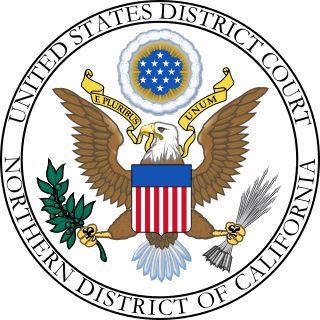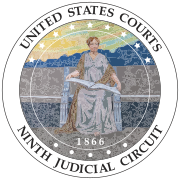
Fair use is a doctrine in United States law that permits limited use of copyrighted material without having to first acquire permission from the copyright holder. Fair use is one of the limitations to copyright intended to balance the interests of copyright holders with the public interest in the wider distribution and use of creative works by allowing as a defense to copyright infringement claims certain limited uses that might otherwise be considered infringement. The U.S. "fair use doctrine" is generally broader than the "fair dealing" rights known in most countries that inherited English Common Law. The fair use right is a general exception that applies to all different kinds of uses with all types of works. In the U.S., fair use right/exception is based on a flexible proportionality test that examines the purpose of the use, the amount used, and the impact on the market of the original work.
Harper & Row v. Nation Enterprises, 471 U.S. 539 (1985), was a United States Supreme Court decision in which public interest in learning about a historical figure's impressions of a historic event was held not to be sufficient to show fair use of material otherwise protected by copyright. Defendant, The Nation, had summarized and quoted substantially from A Time to Heal, President Gerald Ford's forthcoming memoir of his decision to pardon former president Richard Nixon. When Harper & Row, who held the rights to A Time to Heal, brought suit, The Nation asserted that its use of the book was protected under the doctrine of fair use, because of the great public interest in a historical figure's account of a historic incident. The Court rejected this argument holding that the right of first publication was important enough to find in favor of Harper.

A&M Records, Inc. v. Napster, Inc., 239 F.3d 1004 was a landmark intellectual property case in which the United States Court of Appeals for the Ninth Circuit affirmed a district court ruling that the defendant, peer-to-peer file sharing service Napster, could be held liable for contributory infringement and vicarious infringement of copyright. This was the first major case to address the application of copyright laws to peer-to-peer file sharing.

Computer Associates International, Inc. v. Altai, Inc., 982 F.2d 693 is a decision from the United States Court of Appeals for the Second Circuit that addressed to what extent non-literal elements of software are protected by copyright law. The court used and recommended a three-step process called the Abstraction-Filtration-Comparison test. The case was an appeal from the United States District Court for the Eastern District of New York in which the district court found that defendant Altai's OSCAR 3.4 computer program had infringed plaintiff Computer Associates' copyrighted computer program entitled CA-SCHEDULER. The district court also found that Altai's OSCAR 3.5 program was not substantially similar to a portion of CA-SCHEDULER 7.0 called SYSTEM ADAPTER, and thus denied relief as to OSCAR 3.5. Finally, the district court concluded that Computer Associates' state law trade secret misappropriation claim against Altai was preempted by the federal Copyright Act. The appeal was heard by Judges Frank Altimari, John Daniel Mahoney, and John M. Walker, Jr. The majority opinion was written by Judge Walker. Judge Altimari concurred in part and dissented in part. The Second Circuit affirmed the district court's ruling as to copyright infringement, but vacated and remanded its holding on trade secret preemption.
In United States copyright law, transformative use or transformation is a type of fair use that builds on a copyrighted work in a different manner or for a different purpose from the original, and thus does not infringe its holder's copyright. Transformation is an important issue in deciding whether a use meets the first factor of the fair-use test, and is generally critical for determining whether a use is in fact fair, although no one factor is dispositive.

Castle Rock Entertainment Inc. v. Carol Publishing Group, 150 F.3d 132, was a U.S. copyright infringement case involving the popular American sitcom Seinfeld. Some U.S. copyright law courses use the case to illustrate modern application of the fair use doctrine. The United States Court of Appeals for the Second Circuit upheld a lower court's summary judgment that the defendant had committed copyright infringement. The decision is noteworthy for classifying Seinfeld trivia not as unprotected facts, but as protectable expression. The court also rejected the defendant's fair use defense finding that any transformative purpose posse, Inc., 510 U.S. 569 (1994).
The copyright law of the United States grants monopoly protection for "original works of authorship". With the stated purpose to promote art and culture, copyright law assigns a set of exclusive rights to authors: to make and sell copies of their works, to create derivative works, and to perform or display their works publicly. These exclusive rights are subject to a time and generally expire 70 years after the author's death or 95 years after publication. In the United States, works published before January 1, 1929, are in the public domain.

Perfect 10, Inc. v. Amazon.com, Inc., 508 F.3d 1146 was a case in the United States Court of Appeals for the Ninth Circuit involving a copyright infringement claim against Amazon.com, Inc. and Google, Inc., by the magazine publisher Perfect 10, Inc. The court held that framing and hyperlinking of original images for use in an image search engine constituted a fair use of Perfect 10's images because the use was highly transformative, and thus not an infringement of the magazine's copyright ownership of the original images.
Field v. Google, Inc., 412 F.Supp. 2d 1106 is a case where Google Inc. successfully defended a lawsuit for copyright infringement. Field argued that Google infringed his exclusive right to reproduce his copyrighted works when it "cached" his website and made a copy of it available on its search engine. Google raised multiple defenses: fair use, implied license, estoppel, and Digital Millennium Copyright Act safe harbor protection. The court granted Google's motion for summary judgment and denied Field's motion for summary judgment.

Religious Technology Center v. Netcom On-Line Communication Services, Inc., 907 F. Supp. 1361, is a U.S. district court case about whether the operator of a computer bulletin board service ("BBS") and Internet access provider that allows that BBS to reach the Internet should be liable for copyright infringement committed by a subscriber of the BBS. The plaintiff Religious Technology Center ("RTC") argued that defendant Netcom was directly, contributorily, and vicariously liable for copyright infringement. Netcom moved for summary judgment, disputing RTC's claims and raising a First Amendment argument and a fair use defense. The district court of the Northern District of California concluded that RTC's claims of direct and vicarious infringement failed, but genuine issues of fact precluded summary judgment on contributory liability and fair use.

NXIVM Corp. v. The Ross Institute, 364 F.3d 471, was a United States Court of Appeals for the Second Circuit decision that held that the defendant's critical analysis of material obtained in bad faith, i.e., in violation of a non-disclosure agreement, was fair use since the secondary use was transformative as criticism and was not a potential replacement for the original on the market, regardless of how the material was obtained.

Salinger v. Random House, Inc., 811 F.2d 90 is a United States case on the application of copyright law to unpublished works. In a case about author J. D. Salinger's unpublished letters, the Second Circuit held that the right of an author to control the way in which their work was first published took priority over the right of others to publish extracts or close paraphrases of the work under "fair use". In the case of unpublished letters, the decision was seen as favoring the individual's right to privacy over the public right to information. However, in response to concerns about the implications of this case on scholarship, Congress amended the Copyright Act in 1992 to explicitly allow for fair use in copying unpublished works, adding to 17 U.S.C. 107 the line, "The fact that a work is unpublished shall not itself bar a finding of fair use if such finding is made upon consideration of all the above factors."

Wright v. Warner Books (1991) was a case in which the widow of the author Richard Wright (1908–1960) claimed that his biographer, the poet and writer Margaret Walker (1915–1998), had infringed copyright by using content from some of Wright's unpublished letters and journals. The court took into account the recent ruling in Salinger v. Random House, Inc. (1987), which had found that a copyright owner had the right to control first publication, but found in favor of Walker after weighing all factors. The case had broad implications by allowing the use of library special collections for academic research.

Bill Graham Archives v. Dorling Kindersley, Ltd., 448 F.3d 605, is a 2006 case of the United States Court of Appeals for the Second Circuit regarding fair use of images in a pictorial history text. It affirmed the United States District Court for the Southern District of New York, which held at trial that the publisher's use of several images of past Grateful Dead concert posters and tickets, reduced considerably, in a timeline of the band's history was a sufficiently transformative use.

Capitol Records, LLC v. ReDigi Inc., 934 F. Supp. 2d 640 , is a case from the United States District Court for the Southern District of New York concerning copyright infringement of digital music. In ReDigi, record label Capitol Records claimed copyright infringement against ReDigi, a service that allows resale of digital music tracks originally purchased from the iTunes Store. Capitol Records' motion for a preliminary injunction against ReDigi was denied, and oral arguments were given on October 5, 2012.

Associated Press v. Meltwater U.S. Holdings, Inc. was a district court case in which the Associated Press (AP) brought suit against Meltwater Group in U.S. (Meltwater) for clipping and sharing news items under copyright infringement and "hot news" misappropriation under New York common law. In a cross-motion for summary judgement, Meltwater argued they were not infringing under the requirements of fair use. Meltwater claimed that their service was transformative and therefore non-infringing on copyright. The court held that Meltwater's copying was not protected under the fair use doctrine and it was infringing on AP's copyright.
Equals Three, LLC v. Jukin Media, Inc., 139 F. Supp. 3d 1094 was a copyright infringement lawsuit where the court evaluated if commenting on humorous videos in a transformative manner is fair use or exploiting videos for their humor without paying for their use.

Seltzer v. Green Day, Inc 725 F.3d 11704 is a copyright lawsuit where the court determined if Green Day's unauthorized use of the Scream Icon illustration in the video backdrop of a stage show was fair use.

Dr. Seuss Enters., L.P. v. Penguin Books USA, Inc. 109 F.3d 1394 is a copyright lawsuit where the court determined if a copy of an original work's artistic style, plot, themes, and certain key character elements qualified as fair use. Penguin Books published a book titled The Cat NOT in the Hat! A Parody by Dr. Juice that use the artistic style, themes and characteristics of Dr. Seuss books to tell the story of the O. J. Simpson murder case. Dr. Seuss Enterprises accuse the publisher of copyright and trademark infringement.
Andy Warhol Foundation for the Visual Arts, Inc. v. Goldsmith is a U.S. Supreme Court case dealing with transformative use, a component of fair use, under U.S. copyright law. At issue was the Prince Series created by Andy Warhol based on a photograph of the musician Prince by Lynn Goldsmith. It held Warhol's changes were insufficiently transformative to fall within fair use for commercial purposes, resolving an issue arising from a split between the Second and Ninth circuits among others.





